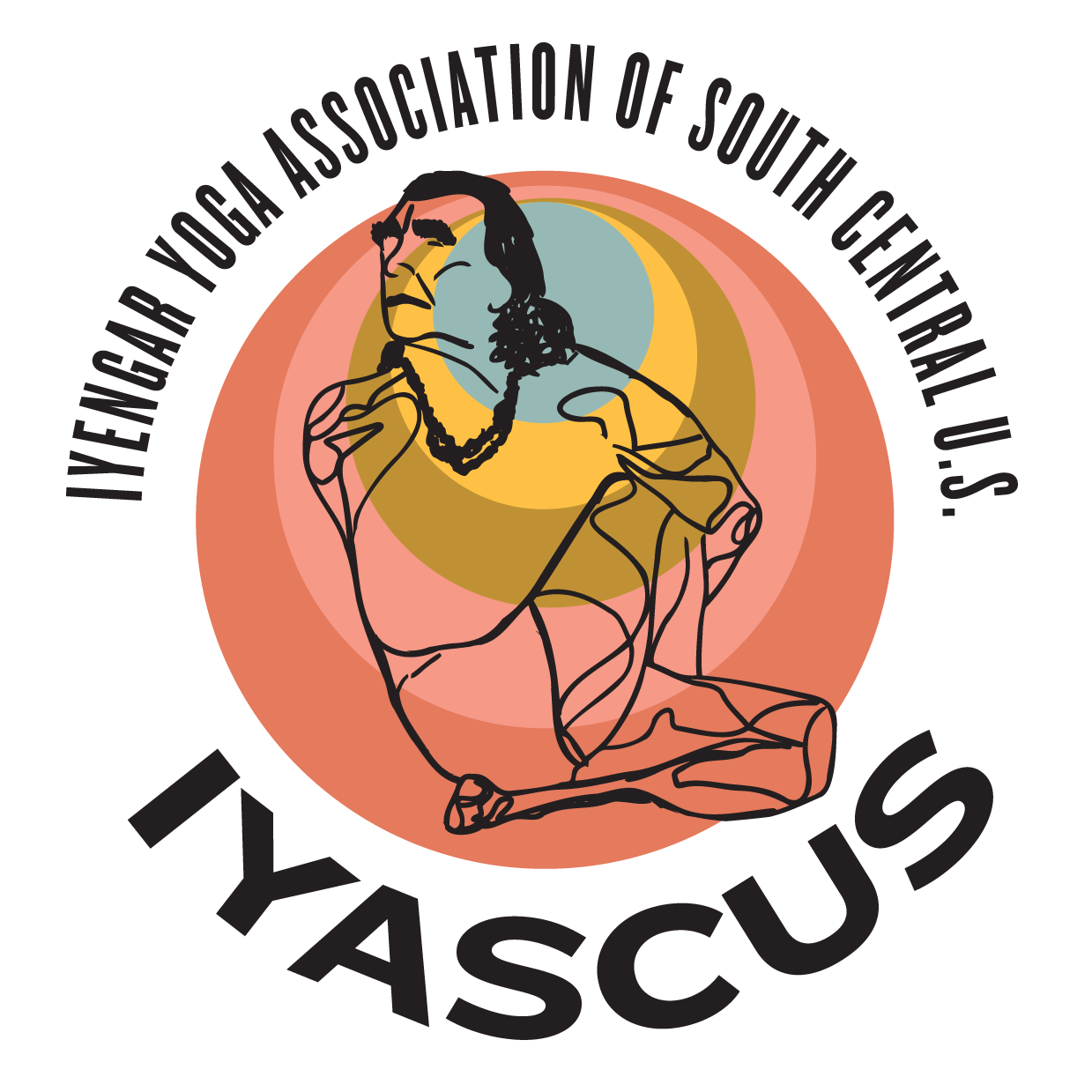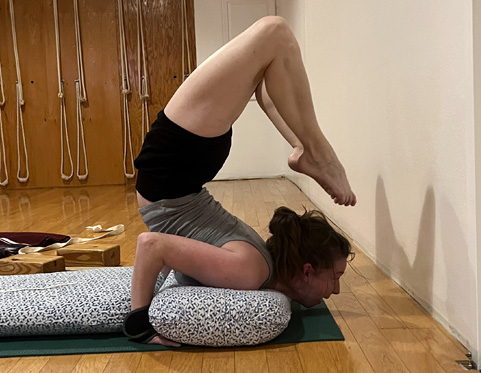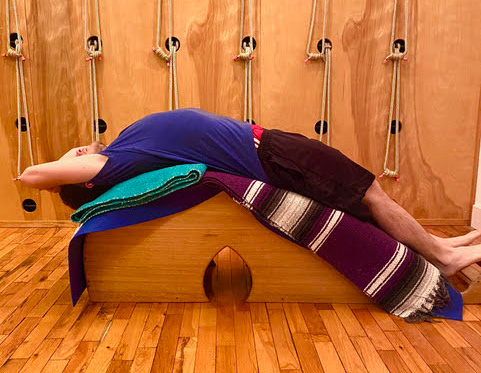about iyengar yoga
Iyengar yoga is a system of hatha yoga developed by B.K.S. Iyengar in the mid-1900s.
integrate
Body, Breath, Mind & Soul
Iyengar Yoga is a system of hatha yoga developed by B.K.S. Iyengar in the mid-1900s. It emphasizes precise alignment, longer holds, a focus on sequencing, and the use of props. All of these features of Iyengar yoga systematically lead the practitioner to more fully integrate body, breath, mind, and soul.
Iyengar yogis focus on detailed aspects of alignment for several reasons. Correct alignment helps prevent injury and allows each part of the body to work more harmoniously in each asana. It facilitates a more expansive and deeper experience of each pose, and a corresponding depth and integration of the mental state. As Mr. Iyengar wrote, “It is through the alignment of the body that I discovered the alignment of my mind, self, and intelligence.”
Similarly, holding each asana allows time to observe and refine the alignment. Longer holds also help develop physical strength and mental equanimity. Attention to the sequencing of asanas fosters both the physical and mental practice as well. In a well-structured sequence, each pose builds on the previous ones, leading the practitioner into deeper and more absorbing work.
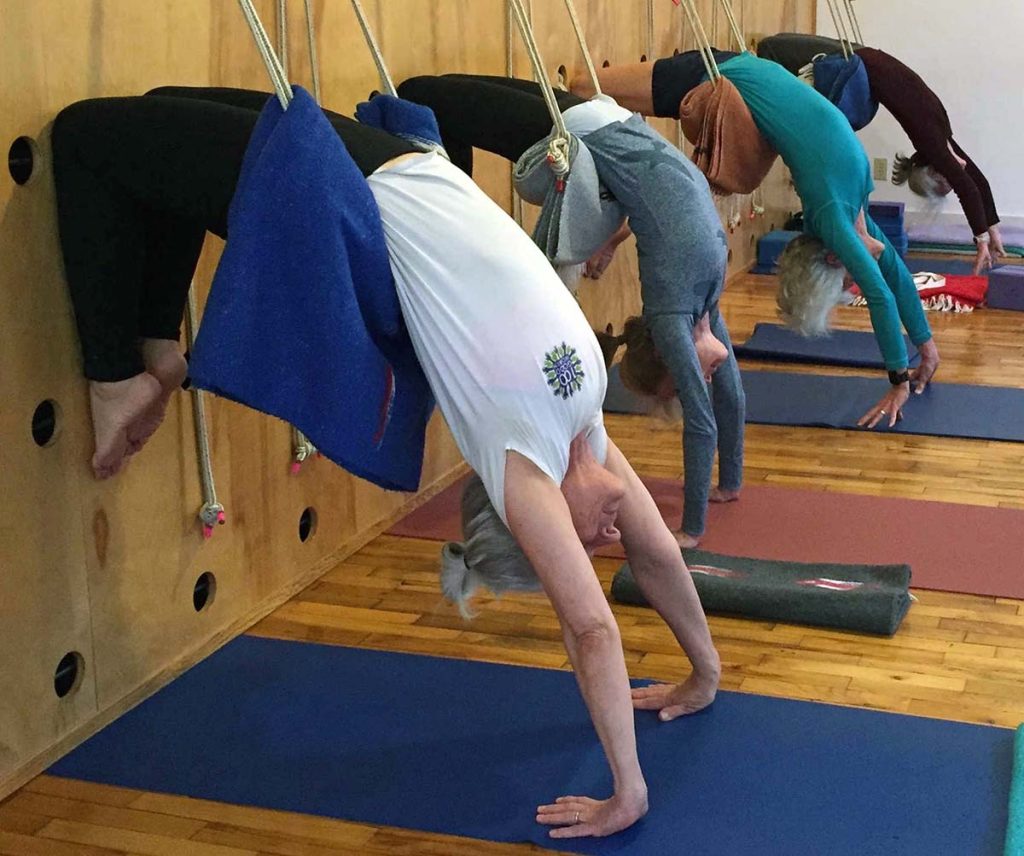
Finally, props – the blocks, straps, blankets, sandbags and other tools that Mr. Iyengar developed and popularized through his own teaching – serve many functions. They improve alignment and enhance awareness of various actions in a pose. They can also make poses more accessible to stiffer students and more challenging for the flexible.
Another unique aspect of Iyengar yoga is its teacher certification. Unlike teachers in other types of yoga, Iyengar teachers must undergo rigorous training and pass a national exam to become certified Iyengar yoga teachers (CIYTs). Only CIYTs are allowed to call their classes Iyengar yoga, and to maintain that designation, they must complete regular continuing education.
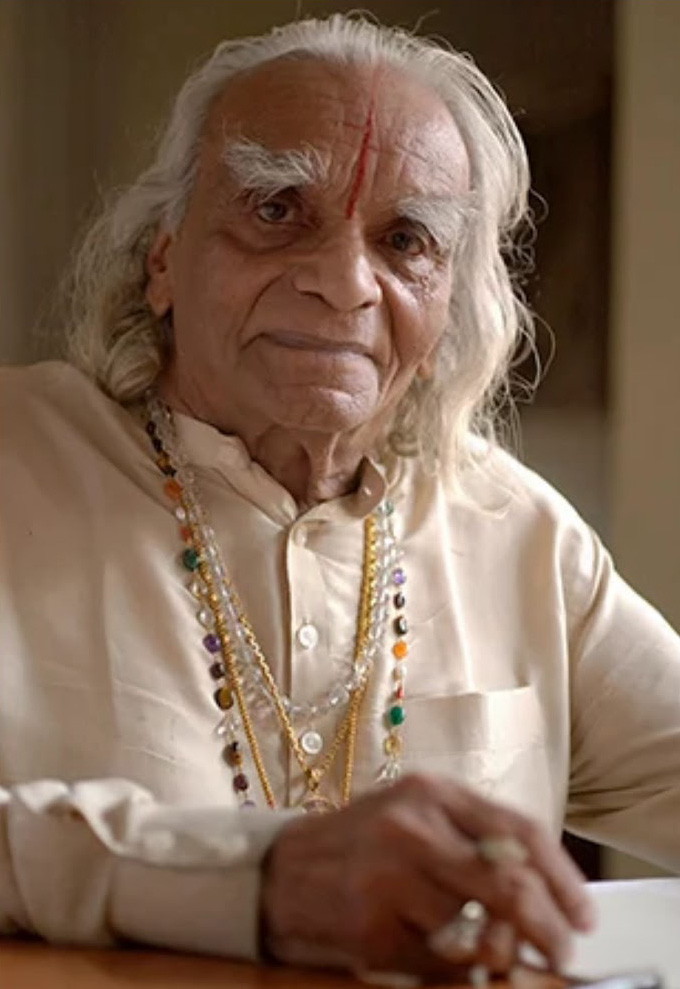
“Yoga is when every cell of the body sings the song of the soul.”
– B.K.S. Iyengar, January 1986
